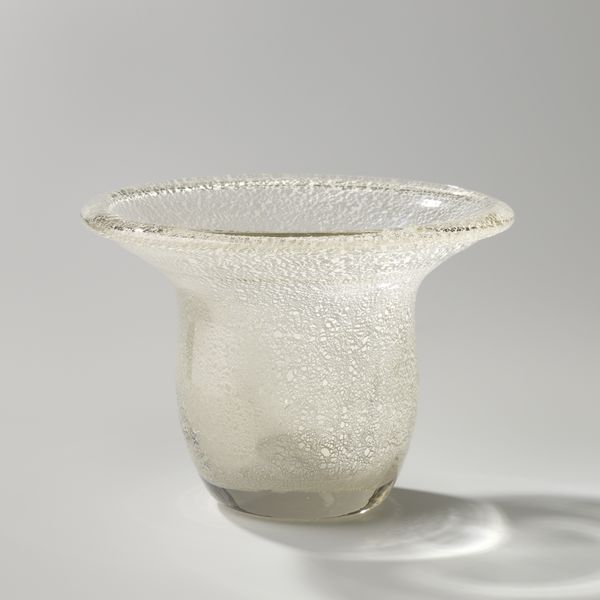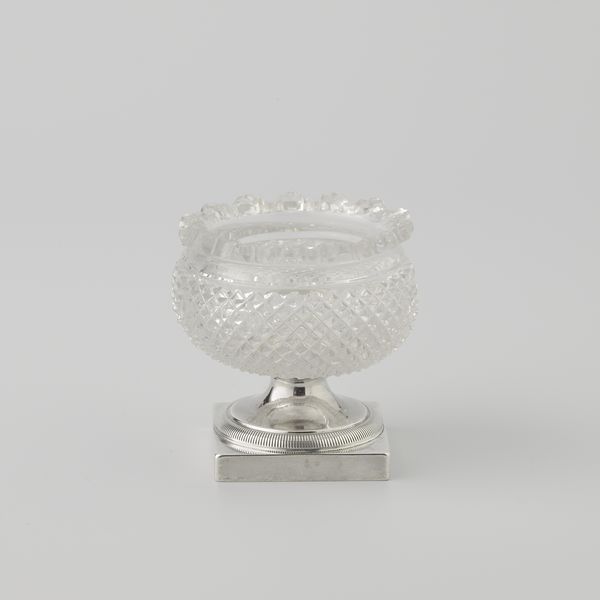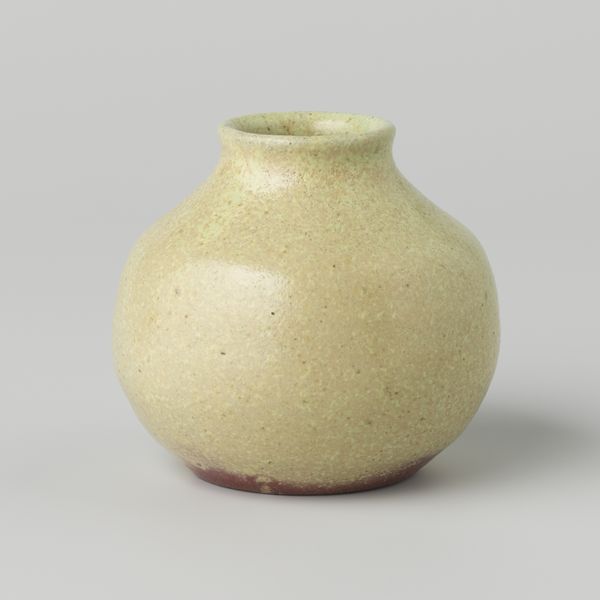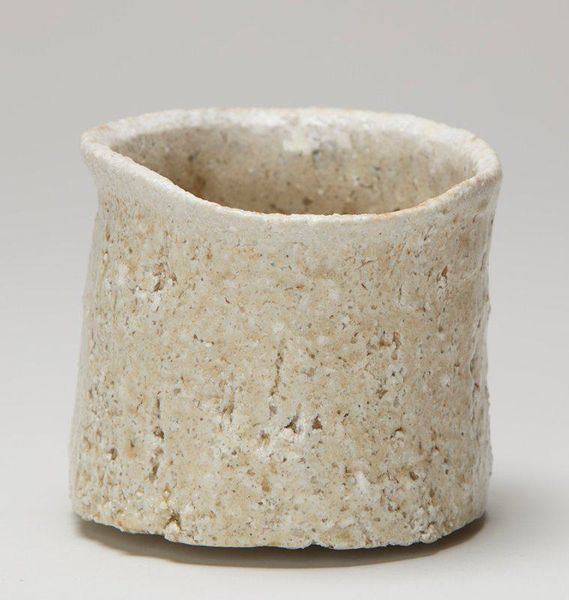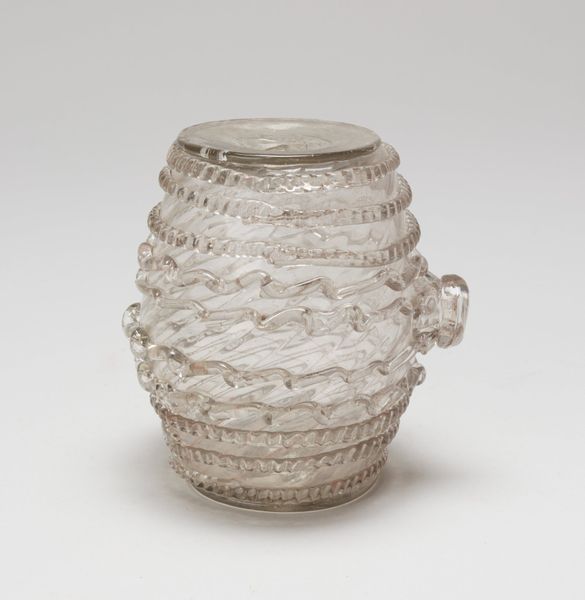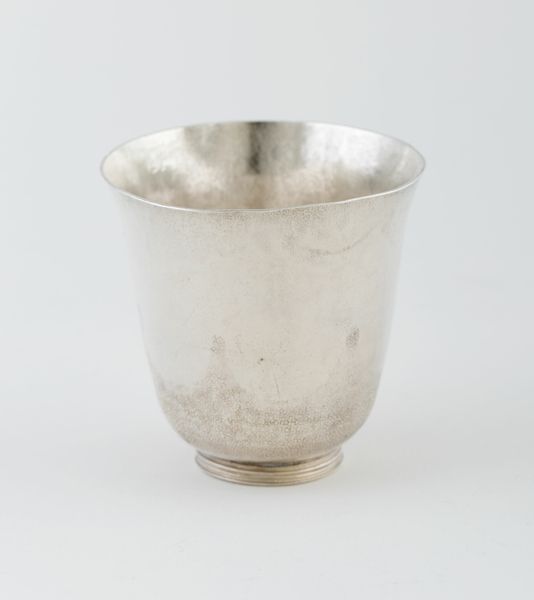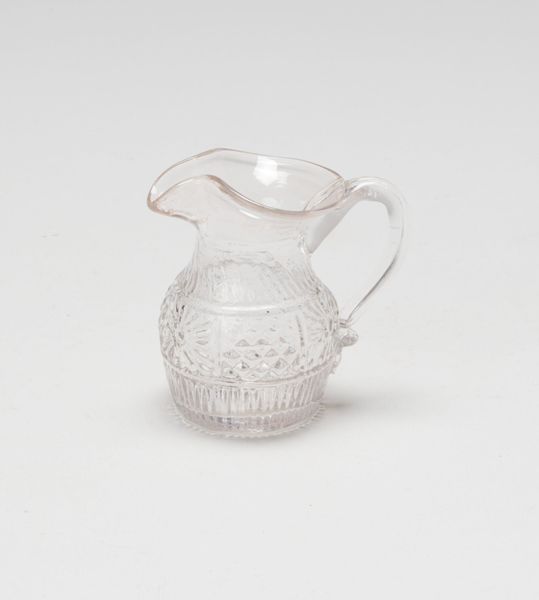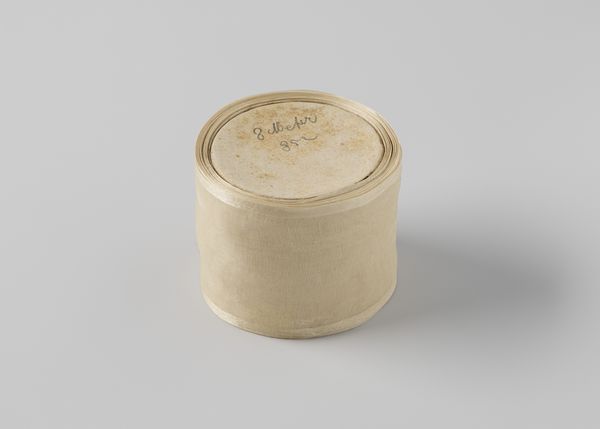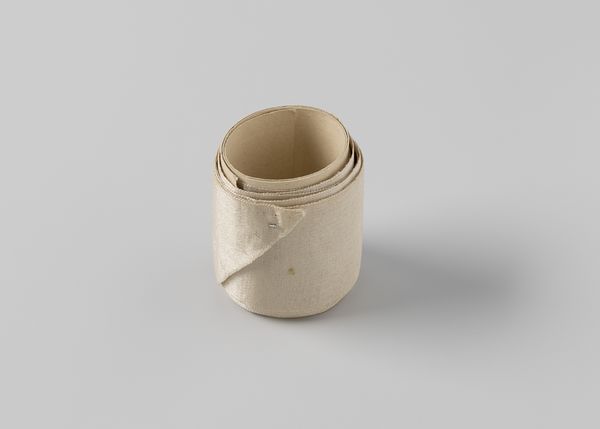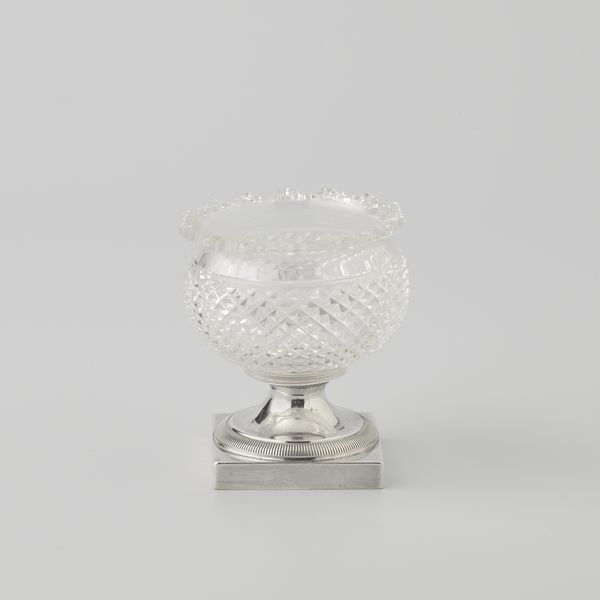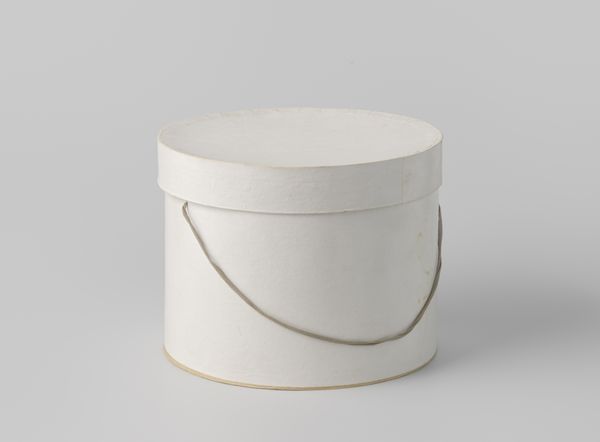
Dimensions: height 16.1 cm, diameter 14.7 cm, width 19.3 cm
Copyright: Rijks Museum: Open Domain
Editor: We’re looking at a glass vase, attributed to Daum Frères around 1937. It’s this pale yellow color with little bubbles trapped inside. It has such a delicate, almost ephemeral feel. What historical or cultural conversations does this piece spark for you? Curator: This vase, while beautiful, invites us to consider the broader social implications of decorative arts, especially during times of economic and political tension. This was made between world wars, right? How does its fragile elegance contrast with the growing unrest and inequalities present during this period? The very act of creating such refined, luxurious items begs the question: art for whom? Editor: That's a good point! So it’s not just about aesthetic pleasure, but also about questioning who could afford and appreciate this type of object at that time. I hadn’t thought about it that way. Curator: Exactly! And how does the Art Nouveau style itself reflect the tensions of its time? It aimed to democratize art by making it accessible in everyday objects, yet these objects often became status symbols of the wealthy. The bubbles, trapped in the glass, symbolize constraint but might be seen, simultaneously, to playfully explore texture and the vessel's relationship with light. Editor: So the bubbles aren’t just a design choice, they represent tensions? Curator: Precisely. Do you think it embraces or critiques those constraints? Consider also the environmental impacts. Manufacturing specialized glassware has consequences for the natural world, impacting the availability of clean water, creating pollution. Does its existence create additional responsibilities for the artist and consumer? Editor: Wow, there's so much more to this seemingly simple vase than I initially thought. I appreciate how you connect it to bigger ideas about access and historical impacts. Curator: Art serves as a mirror to our world, revealing inequalities and power dynamics, which gives us both a unique record of the past and insights that might create a better future. Thanks for helping me think through that today.
Comments
No comments
Be the first to comment and join the conversation on the ultimate creative platform.
